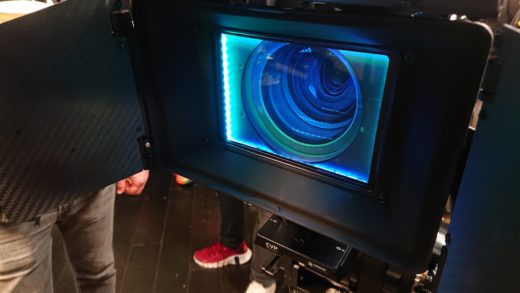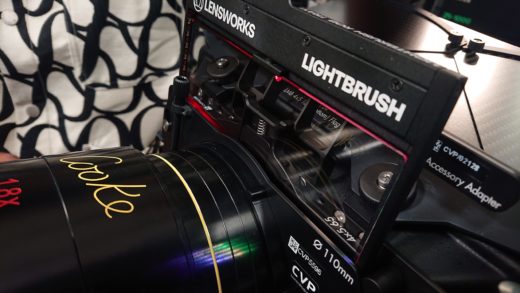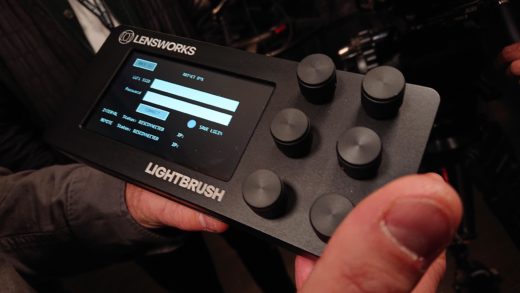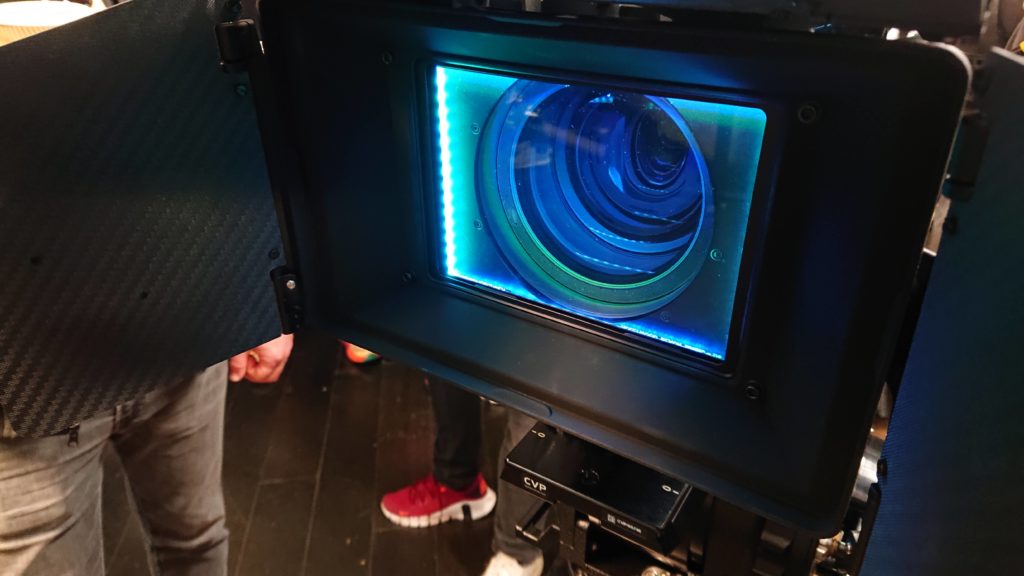
Everyone reading this will hear about the big announcements from the big trade shows, because big companies will spare no effort to make sure we do. As such, the real value of attending trade shows (which we do, so you don’t have to drink overpriced, three-day-old coffee the density of molasses) is often in the sleeper hits – the small booths at the edge, often showing tidy little gadgets which might stand to save us all an enormous amount of time and money.
Or, they might show the sort of contraption that emerges from the tortured mind of someone fresh from several weeks of profound sleep deprivation on a wildlife documentary during which it became clear that the world absolutely requires a mass-produced way to attach a GoPro to a pelican (Not the case. The bird).
I mean, I kid, but…
The BSC expo in London recently got the trade show season off to a promising start at CVP’s pre-show reception, featuring an idea which seems likely to appeal to anyone looking for in-camera, optically-motivated effects. On the basis that’s a group which includes more or less everyone at this point, Lensworks showed its Lightbrush system at the distributor’s Fitzrovia demonstration space, showcasing the system’s ability to apply colour-controlled contrast-reduction effects, including some attractive animated options for sequences of pattern and colour. Even from the photo which heads this article, it’s fairly clear what it is, what it does and how it works, but there are two genuinely useful selling points: it fits in a standard filter slot, and it works with filters of the cinematographer’s choice.

A subtle illumination
This certainly isn’t the first device ever designed to cast a subtle illumination over an entire frame. Both Panavision (in Panaflasher) and Arri (in Varicon) have offered actively-illuminated filter options before, and the Camtec Color-Con possibly introduced full colour mixing, which is also a feature in (at least) Panasflasher 3. Most of the existing options make requirements of other camera accessories – Varicon only fits the larger, possibly less popular MB-15 6-by-6 mattebox, for instance, and occupies extra space above (or, conceivably, below) the filter trays for the electronics.
Similar effects have been approximated using common tools. Cinematographer Denson Baker deliberately flared a diffusion filter by mounting two small LED lights into the mattebox on 2021’s appropriately-named biopic The Colour Room, and similar effects could historically be achieved photochemically by pre-treating film with a controlled light source. It was even proposed that some early digital cameras, such as the never-released Kinetta, would feature LEDs distributed around the sensor to allow for real-time, optical fogging effects.
(In the same vein of traditional, in-camera trickery, Kinetta also discussed a digitally-encoded hand crank, a development which might have prompted a wholesale return to the late-nineties music video world of stop flashes and pulsating double exposures of the Tony Scott persuasion. Which would have been fantastic. For a while.)
Lightbrush, like most of these devices, operates by edge-lighting a filter which must have at least some degree of diffusion to redirect light back into the lens. That means the effect is combined with at least a little highlight glow and softening. It might be very reasonable to desire a tinted reduction in contrast without those effects, inasmuch as lower contrast will already decrease the appearance of sharpness. So, a cinematographer might prefer a very subtle diffusion filter, which would also reduce the visibility of the colour wash effect.

Sparkle-enhanced
This is an compromise which it could be alleviated by making the LEDs very powerful. In practice – based on a quick session of experimenting in a crowded demo room – the LEDs on Lightbrush could possibly be a bit brighter, inasmuch as the maximum effect can be quite subtle, especially on scenes without much deep shadow, though that’s a minor issue – it works best when it’s subtle.
Best of all, it interacts properly with other lens effects and filters – and the cast can see it glowing. With the right filter there’s even a glittering effect.
Engaging cynicism mode, we might recall the promotional effort made for Tiffen’s particularly sparkle-enhanced Glimmerglass, which was sometimes described as a pretty filter which gave a strong impression that it would also make people look pretty. With Lightbrush, now, it glows! In much the same vein, it’s often been said that hot dogs are really sold by the bewitching scent of frying onions, but the results are hard to dislike.
In a trade dominated by huge-ticket toys and equipment lists that often begin with a few of the same dozen items, Lensworks’ Lightbrush is a way to mix things up which is profound and effective without being a twenty-foot video wall worth as much as a movie star’s mansion. Lightbrush is unusual without being esoteric, and it’s easier to use than existing options. In short, it’s exactly the sort of thing which might have remained obscure without an in-person visit, and the kind of thing we’ll be looking for around the edges of NAB’s central hall in a few weeks’ time.

Filmtools
Filmmakers go-to destination for pre-production, production & post production equipment!
Shop Now









